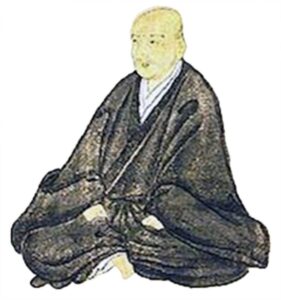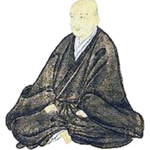
Tea master. Grandson of Rikyu, born in 1578.
His mother was Kame, daughter of Rikyu, and his father was Shoan. His father was Shoan. He was also known as Jikkisai, Kan-un, and Hin-o. He succeeded to the Shoin-an hermitage, and in his later years retired to establish the Kyohan hermitage. In 1591, when his grandfather Rikyu was punished, he was 14 years old. 594, at the age of 17, he left the temple after his father and uncle Dōan were pardoned and returned to the tea ceremony, which was his father’s way, and in 1601, at the age of 24, he received a letter from Haruya Sōen, a Zen master, asking him to teach him the tea ceremony. When his father died in 1614, he was 37 years old. In 1653, at the age of 76, he built the retreat Mata-agakure and gave his former residence to Soso Soshitsu.
He died on December 19, 1658 at the age of 81.
As the monk Tenmuro praised in his picture, Sotan’s tea ceremony was always different from the tea ceremonies of Enshu, Ishizhou, and Sowa, which flourished at that time, because it was based on the spirit of natural and ordinary Wabicha, starting from a deep Zen education. He was deeply respected as the head of the Senke school, and was mentioned in many anecdotes by leading figures such as Hon’ami Koetsu, Konoe Ozan, Daitokuji Seigan Soyo, and Kinkakuji Hourin Seisho. There were four sons: Ichiou Somori (Mushanokoji-Senke), Esen Sousa (Omotesenke), and Senzomuro (Urasenke), who later became Sanzenke, and whose style would flourish for many years to come. Two of the girls married into the family of Muneyoshi Hisada.
Among his disciples, Yamada Sohen, Sugiki Fusai, Fujimura Youken, and Matsuo Soji are known. He also had his favorite tools made by such artisans as IKKAN, TSUCHISAI, and SHOGEN, and he was particularly fond of Raku ware (NONKOU).








